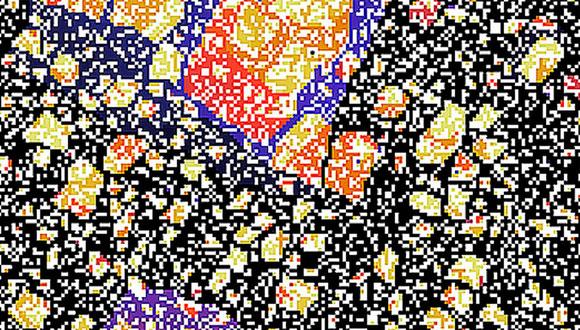סמינר לפיזיקה של מערכות ביולוגיות וחומרים רכים: Structure-Function Guided Exploration of Interactions between Depsipeptides and RNA: From Biomaterials Research to Chemical Principles of Life
Dr. Moran Frenkel-Pinter, Georgia Institute of Technology, USA
Zoom: https://us02web.zoom.us/j/88904888353?pwd=dDIwaXRxSjlsVElkR0dXdTNPTGhnZz09
Abstract:
Functional interactions between proteins and nucleic acids are a hallmark of life on Earth. We hypothesize that cooperative interactions involving proteins and nucleic acids extended back to an era when early chemical evolution was shaped by synergistic interactions between proto-peptides and proto-nucleic acids. It is likely that the polypeptide backbone is the product of chemical evolution, and is a descendant of ancestral proto-peptides composed of monomers that condense readily under prebiotic conditions. It is now known that depsipeptides, which contain mixtures of ester and amide linkages and have been postulated as possible proto-peptides in the prebiotic Earth, can form spontaneously upon drying and heating of mixtures of hydroxy acids with amino acids. We recently studied the formation of cationic depsipeptides in mild conditions in dry-down reactions. We compared oligomerization of hydroxy acids with several cationic amino acids, including the three cationic proteinogenic amino acids (Lys, Arg, and His), along with three non-proteinaceous analogs of Lys that have shorter side chains (ornithine, 2,4-diaminobutyric acid, and 2,3-diaminopropionic acid). We observed that the proteinaceous amino acids polymerized more extensively and with greater regioselectivity through their a-amine compared with non-proteinaceous amino acids, forming predominantly linear, protein-like backbone topologies. These findings provide a purely chemical basis for selection of the positively charged amino acids found in today’s proteins.
Experimental investigation of polymer evolution is crucial for understanding the thermodynamic and kinetic principles that gave rise to increasing levels of complexity, and eventually to biological evolution and life as we know it. We next showed that cationic depsipeptides and polyesters, either produced as mixtures from plausibly prebiotic dry-down reactions or synthetically prepared in pure form, can engage in direct interactions with RNA resulting in mutual stabilization. We demonstrated that cationic depsipeptides significantly increased the thermal stability of folded RNA structures; we show that the addition of a depsipeptide can shift the extent of RNA duplex hybridization from <10% to ~85% hybridized. Intriguingly, we found that depsipeptides containing arginine, lysine, or histidine generally increased RNA duplex thermal stability to a greater extent than did analogous sequences containing non-proteinaceous ornithine, 2,4-diaminobutyric acid, or 2,3-diaminopropionic acid. In turn, RNA can reduce the rate of hydrolysis of cationic depsipeptide ester bonds by >30-fold. Our findings support a model in which tightly-intertwined biological dependencies of RNA and protein are reflective of a long co-evolutionary history that began with rudimentary, mutually-beneficial interactions at early stages of polypeptide and nucleic acid chemical evolution.
References:
-
Frenkel-Pinter M, Haynes JW, Mohyeldin AM, C M, Sargon AB, Petrov AS, Krishnamurthy R, Hud NV, Williams LD* and Leman LJ*. Mutually Beneficial Interactions Between Proto-Peptides and RNA. Nat Commun 2020. 11(1):3137. doi: 10.1038/s41467-020-16891-5.
-
Frenkel-Pinter M, Samanta M, Ashkenasy G* and Leman LJ*. Prebiotic Peptides: Molecular Hubs in the Origin of Life. Chem Rev. 2020. 120(11):4707-4765. doi: 10.1021/acs.chemrev.9b00664
-
Frenkel-Pinter M, Haynes JW, C M, Petrov AS, Burcar BT, Krishnamurthy R, Hud NV, Leman LJ* and Williams LD*. Selective Incorporation of Proteinaceous over Non-Proteinaceous Cationic Amino Acids in Model Prebiotic Oligomerization Reactions. Proc Natl Acad Sci U S A. 2019; 116(33):16338-16346.


